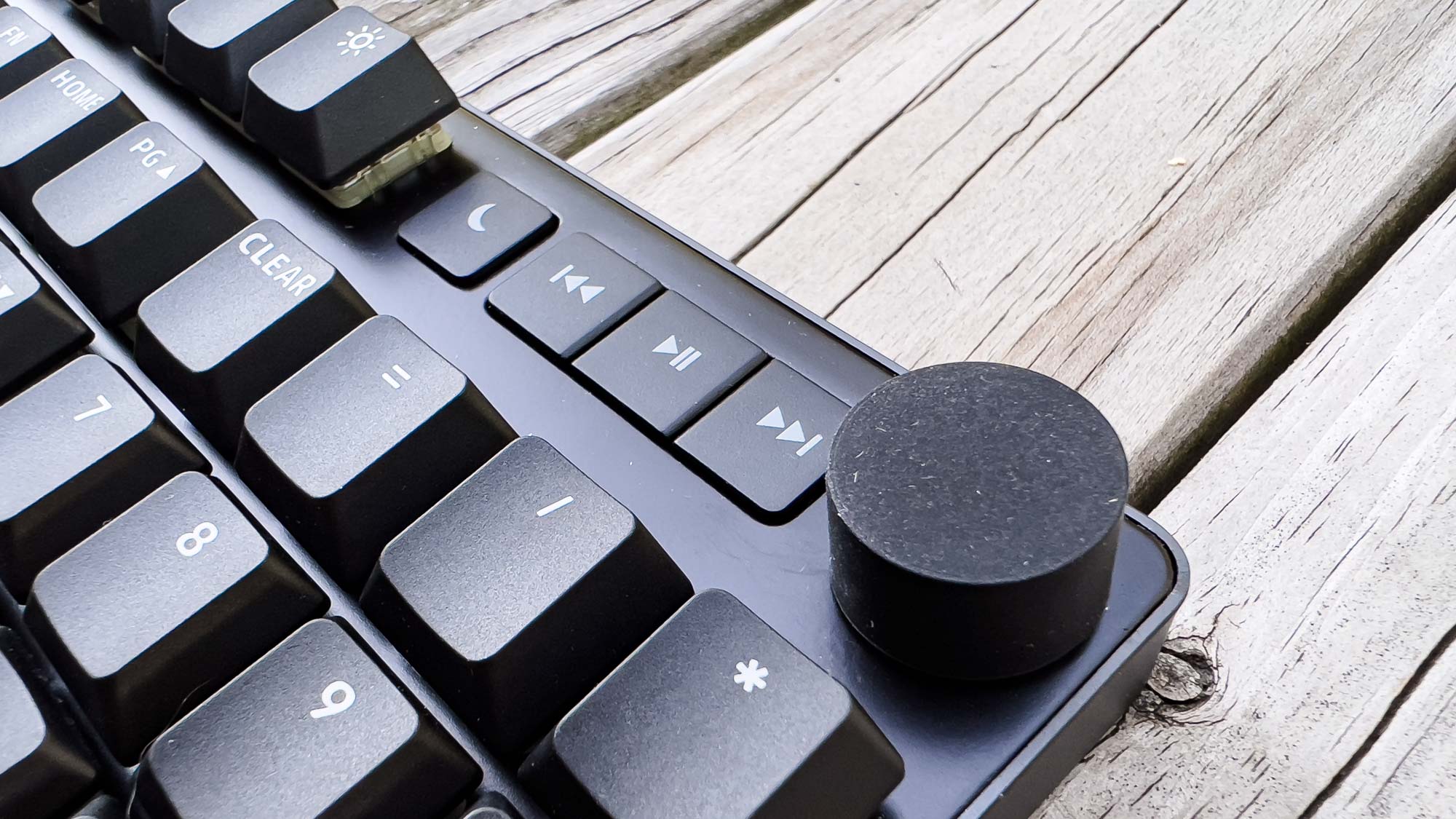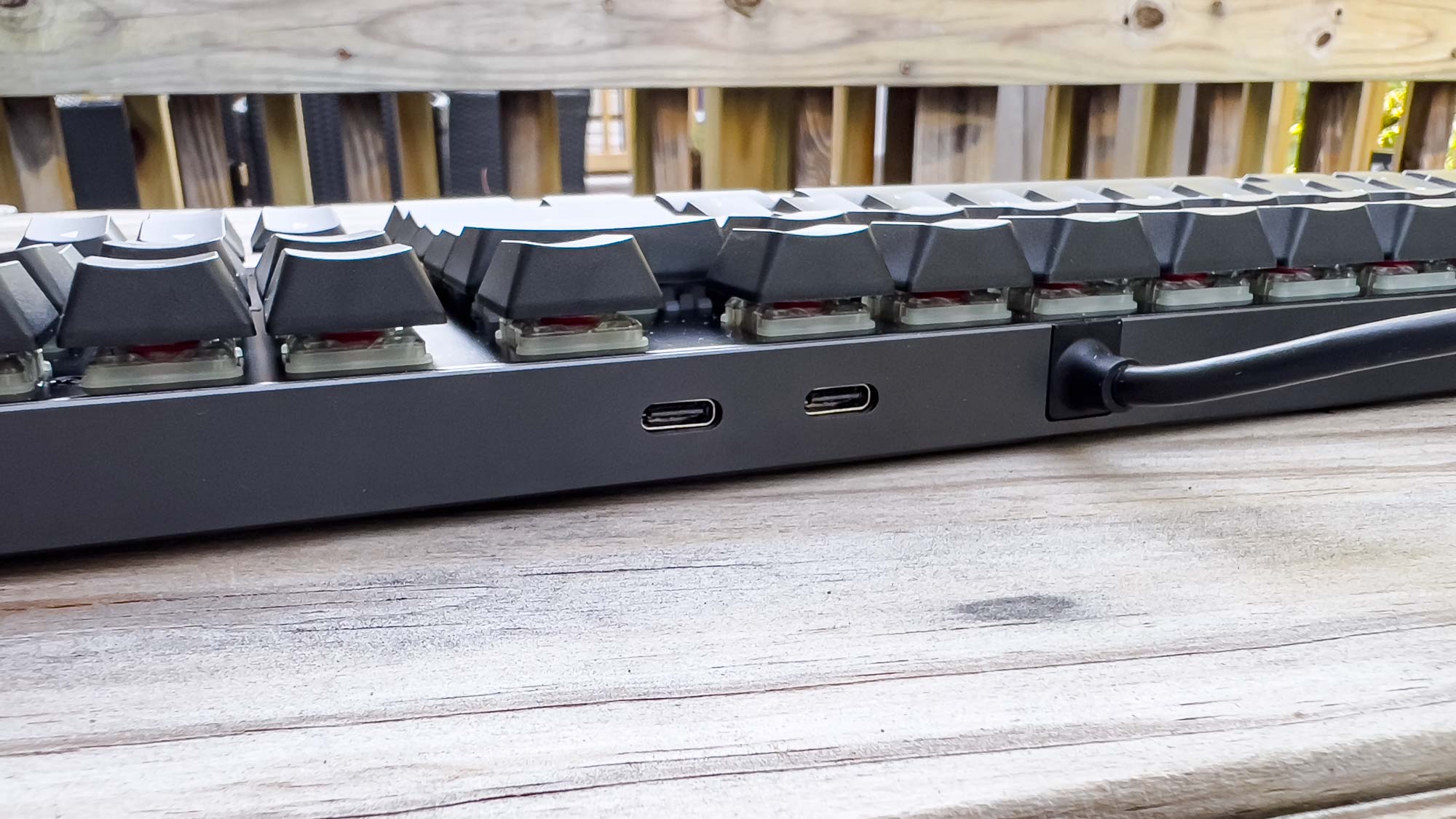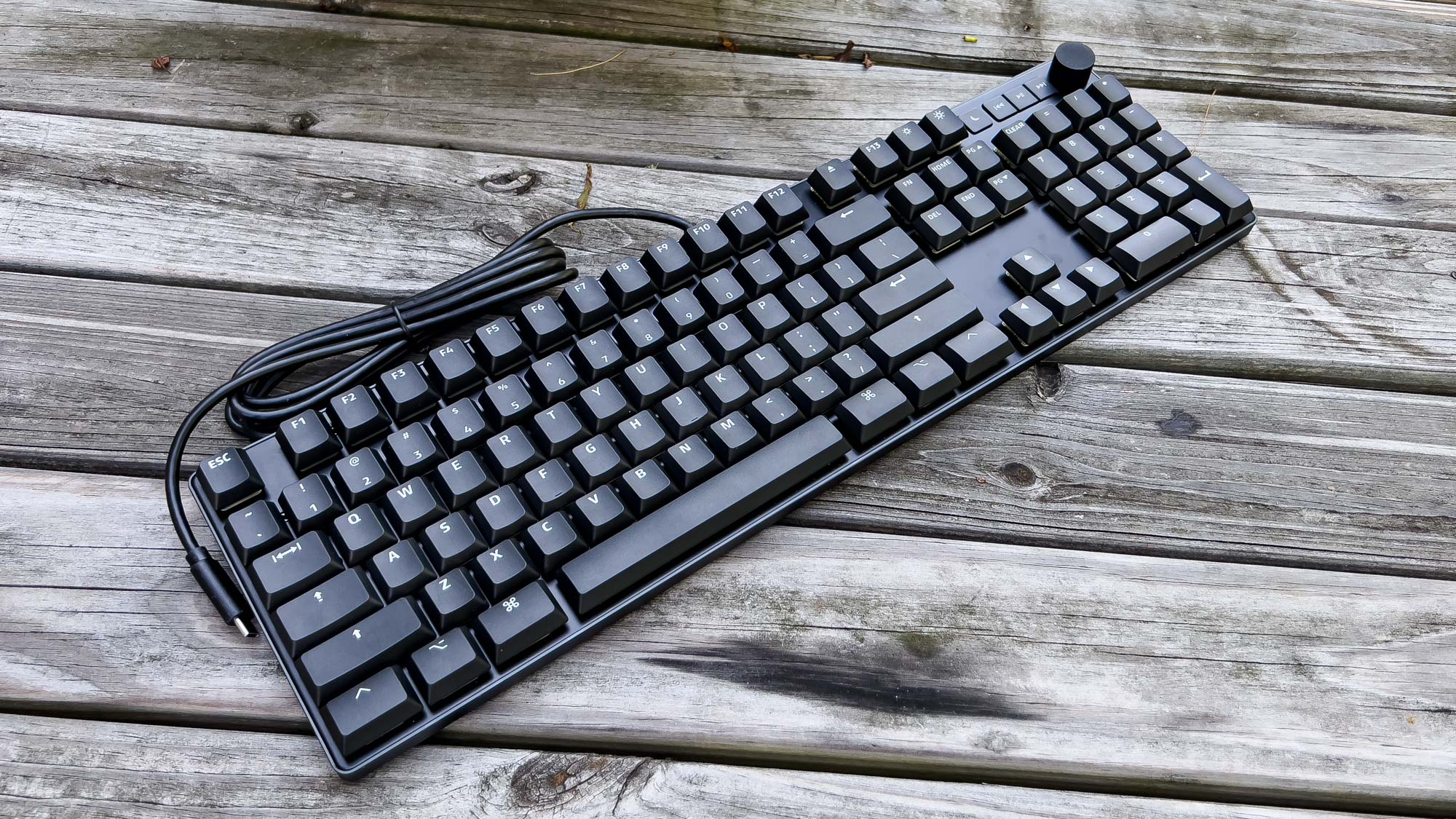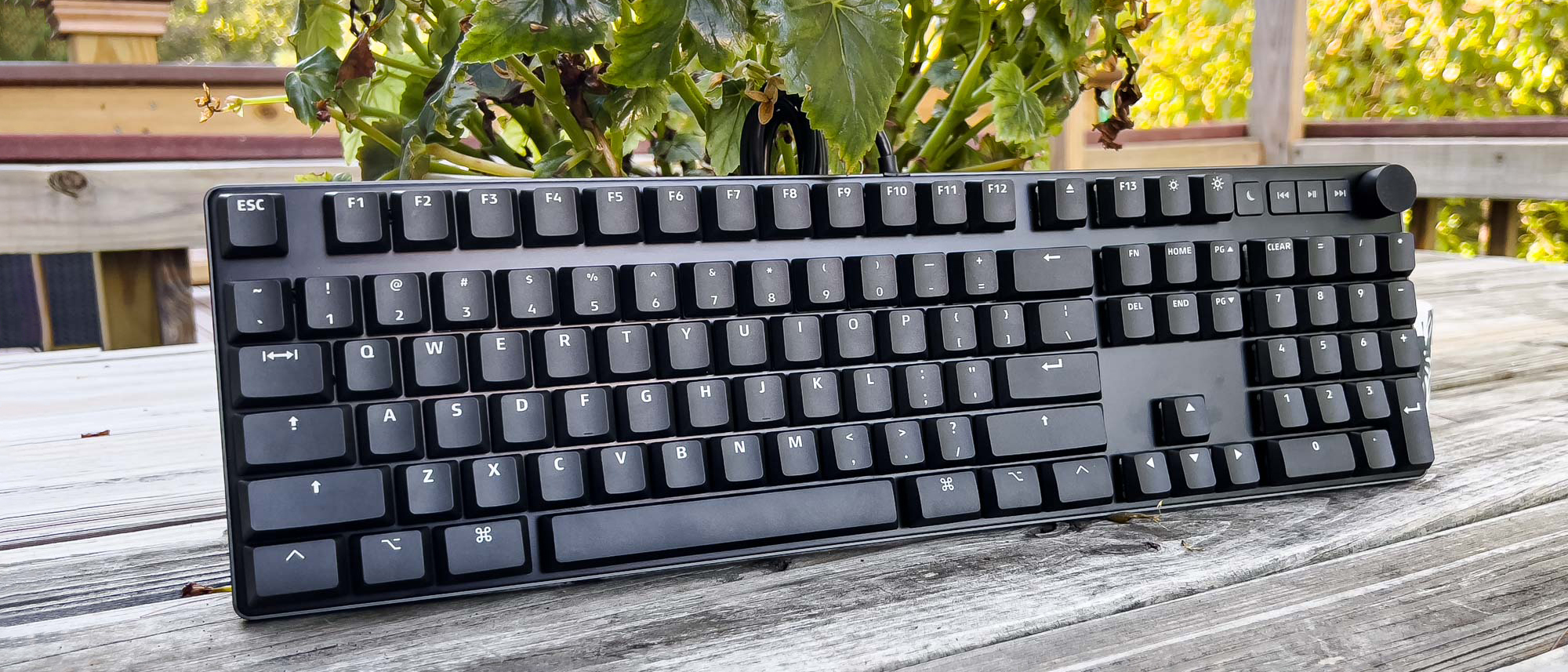Tom's Guide Verdict
Das Keyboard has a decent reputation in the mechanical keyboard community, but the new MacTigr full-size keyboard for macOS disappoints. With keycaps that feel cheap and pop off the switches with alarming ease, the MacTigr is not worth $219.
Pros
- +
Solid construction
- +
Great layout for full-size keyboard fans
- +
USB-C hub is neat
Cons
- -
Expensive
- -
Keycaps feel cheap
- -
Low Profile Red switches feel squishy
- -
No adjustable height
Why you can trust Tom's Guide
Price: $219
Layout: Mac, 105-key full size
Switches: Cherry MX Low Profile Red
Keycaps: Double shot PBT (low profile)
Materials: Steel plate, aluminum case
Extras: Multimedia keys, volume knob, 2-port USB-C hub
Colors: Black
Mechanical keyboards are a deeply personal thing, so when I say I did not like the Das Keyboard MacTigr, you should take my opinion with a grain of salt. However, this $219 full-size keeb aims at macOS exclusively, so Mac users who have been dying for a full-size keyboard should jump for joy.
I caution you, however, to consider that the MacTigr might not be all that you’ve been hoping for, especially looking at its value proposition. It certainly has some good things going for it, such as a solid aluminum and steel build and a two-port USB-C hub built right in. But the keyboard falters for me with cheap-feeling keycaps — which also pop off their switches with incredible ease, even while typing — squishy switches, and a sound profile that I could not stand.
In this Das Keyboard MacTigr review, I’ll break down what’s going on with this keyboard and why I would recommend other products for Mac instead.
Das Keyboard MacTigr review: Price and availability
The MacTigr comes in one configuration and colorway: black with Cherry MX Low Profile Red switches. With 105 keys, you’ll need to drop a hefty $219 on this keyboard. You can purchase the MacTigr from Das Keyboard or Amazon beginning in early September.
The MacTigr is one of the more expensive Mac-specific keyboards. While it’s already a niche market, there are several more tenable options available from the likes of Vissles and Keychron. In the latter’s case, you can get the full-size wireless K10 in an optional hot-swappable variant. Most Mac-focused mechanical keyboards are a 75% layout, so full-size options are limited.
Das Keyboard MacTigr review: Design
I’d best describe the MacTigr as unassuming. With a stealthy design, this keyboard won’t draw any eyes with flashy key caps or RGB, or any backlighting to speak of. The solid black aluminum case blends in with most desk furniture, as do the black caps. (The legends are white.)

Normally, steel plates don’t bother me, even if they’re not typically my favorite material for a custom keeb plate. But the one here on the MacTigr doesn’t do it for me. It has a dull profile and I dislike how the caps sound when they bottom out. I don’t think there’s a lot of noise dampening underneath the plate, either. In fact, no one in my household who had to listen to me type on the MacTigr liked it — compare that to one of my quieter boards, which most barely notice.
Get instant access to breaking news, the hottest reviews, great deals and helpful tips.

If you like (or need) full-size keyboards, then more power to you. The MacTigr comes with an additional F13 key, an eject key and a sleep button. It, however, lacks most of the Mac function row keys. At least you get display brightness and media playback controls. The volume knob is a nice touch, though. It feels very smooth, both to the touch and in use. It has a quiet click when it actuates and I find it rather satisfying.

Partially to make up for the lack of wireless functionality, there’s a two-port USB-C hub on the back of the MacTigr, which is nice since the keyboard takes up a USB-C port on your Mac. It baffles me that this $219 keyboard isn’t wireless when you can find several mechanical Mac options that are.
Das Keyboard MacTigr review: Switches and keycaps
I typed this entire review on the MacTigr and I honestly can’t wait to go back to my main keyboard. I generally prefer tactile switches for typing, but I’ve come around to linears in some cases, such as the Vissles V84 and its VS II switch. But the MacTigr’s Cherry Low Profile Reds do not thrill me.
They have a squishy and unsatisfying feel to them. Typing feels off, even though the switch has a 45 g actuation force. Maybe it’s the 3.2mm travel that messes with me. Regardless, I do not enjoy these switches and the MacTigr does not let you remove them and swap for something else — the lack of hot-swap compatibility hurts this product.

The low profile keycaps, meanwhile, irritate me. They feel cheap and thin, and they pop off their switches with ease. In fact, when the keyboard arrived, three or four of the caps had come off. I even had one come loose while typing, even after depressing every cap to ensure they were firmly fixed to their switches.
Since there’s no backlight, the MacTigr’s keycaps are very plain black with white legends. I don’t find them all that exciting, but that’s a personal thing.
Das Keyboard MacTigr review: Features
You won’t find many standout features with the MacTigr. It’s not aimed at gamers per se, but rather professionals on Mac who need a full-size keyboard. There’s no RGB or backlighting, no fancy profiles, or much of anything to speak of.
However, one of Das Keyboard’s flagship features is NKRO, or n-key rollover, which you’ll find on the MacTigr. This allows for the keyboard to register multiple inputs at once. The n stands for an integer, so you could technically, for example, set up your keyboard to register five keystrokes simultaneously. This means that if you type incredibly fast, you won’t have to worry about your keyboard missing an input from one keystroke to another.

In reality, however, this is a niche feature. In the MacTigr’s case, I can see it being useful for fast typists, such as for data entry tasks with the numpad. Otherwise, I doubt most people will ever need NKRO and, while it’s neat, it doesn’t make up for the MacTigr’s faults and high price tag.
Das Keyboard MacTigr review: Verdict
My bias against full-size keyboards aside, I can’t say that I was too impressed with the MacTigr. The keycaps don’t feel good at all — granted, this is the easiest thing to change about a mechanical keyboard, and I encourage you to do so if you pick one of these up. But I also don’t appreciate the feel of the Low Profile Red switches. I’ve come around to enjoying a linear switch for certain applications, but these don’t do it for me. And since the board is not hot-swappable, you’re stuck with them.
At $219, the MacTigr feels grossly overpriced. I do like the aluminum case, but the steel plate combined with the cheap-feeling caps is not a sound profile I, nor anyone else in my household, liked. While they might lack the metal case, you can get Mac layout keyboards for $100 or so less than the MacTigr — in fact, I’m still using the wireless $109 Vissles V84 I reviewed a while ago.
The MacTigr feels over-engineered and yet it under-delivers. Whether you like full-size keebs or not, this one fails to justify its price tag. I tend not to like Cherry switches, so take my opinion on the Low Profile Reds with that caveat, but I did not enjoy my typing experience with the MacTigr. Unless you’re dying for a full-size Mac mechanical keyboard, I’d say pass on this one unless it comes down in price.

Jordan is the Phones Editor for Tom's Guide, covering all things phone-related. He's written about phones for over six years and plans to continue for a long while to come. He loves nothing more than relaxing in his home with a book, game, or his latest personal writing project. Jordan likes finding new things to dive into, from books and games to new mechanical keyboard switches and fun keycap sets. Outside of work, you can find him poring over open-source software and his studies.

